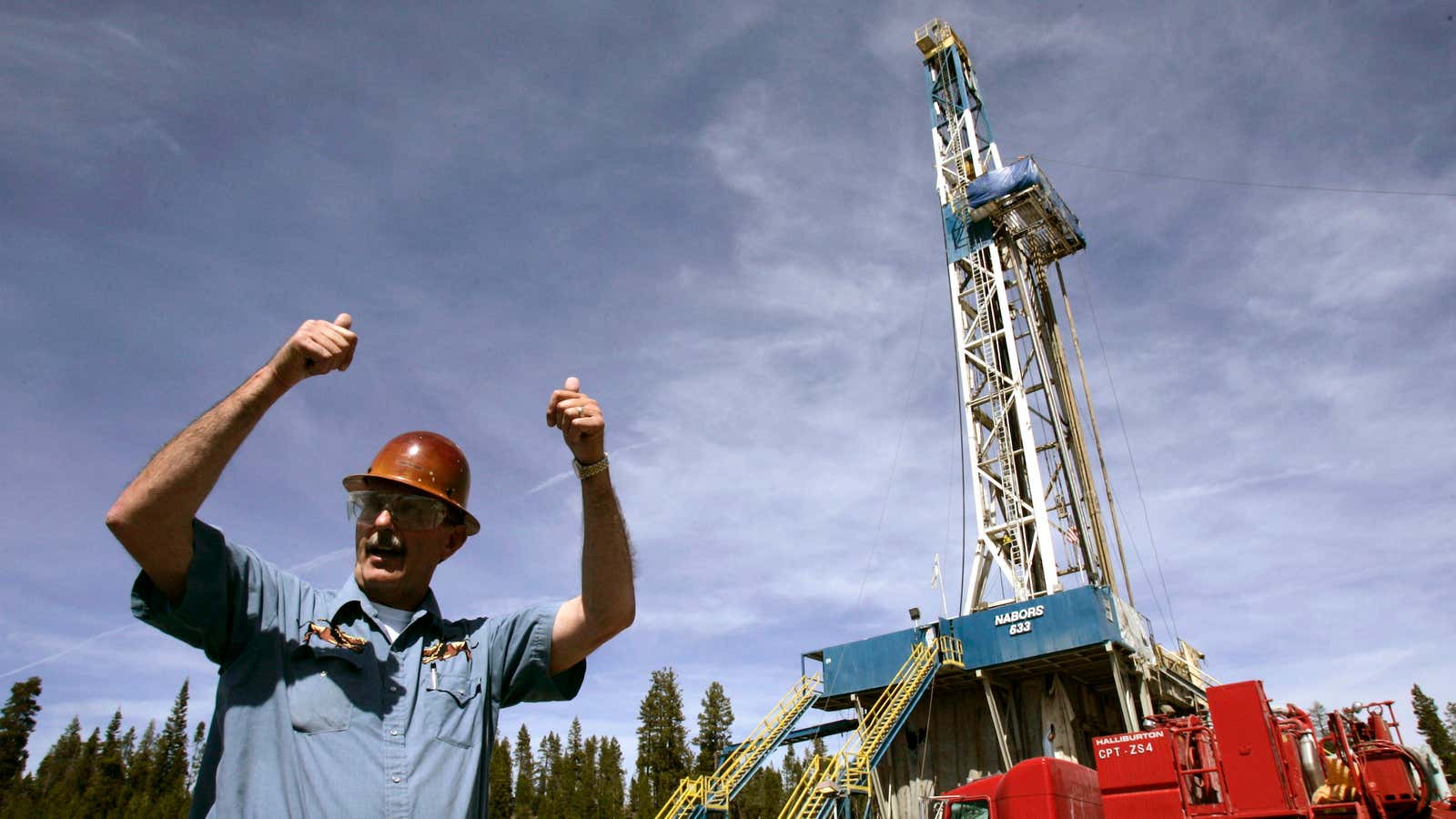Geothermal energy has long been a great green hope for weaning the world from fossil fuels and promoting energy independence. Unlike solar and wind farms, geothermal energy plants generate electricity continuously, providing a dependable, nearly carbon-free source of power.
Yet a report out last week from the Geothermal Energy Association, an industry trade group, found that geothermal capacity in the US grew by just 5%, or 147 megawatts (MW), in 2012. Total geothermal capacity now stands at 3,386 MW. In contrast, the US added 13,200 MW of wind energy last year for a total 60,000 MW. And some 3,200 MW of new solar energy was expected to go online in 2012.
What gives? For one, developing geothermal power is a high-risk, high-cost business. Developers spend millions of dollars drilling wells in the hope of finding underground reservoirs of hot water that can be tapped to create steam to drive electricity-generating turbines.
In that sense, the geothermal industry is very much like the oil and gas industries. But while an ExxonMobil may hit dry wells, the payoff for finding live ones is the price petroleum fetches on a global market. Geothermal energy, however, can’t be sold on exchanges and shipped around the world on trains and in tankers; it has to be generated and pumped straight into the electricity grid. A geothermal power plant operator is therefore typically locked into a 20-year-contract to supply electricity to a local utility.
That’s not an formula that investors have found compelling. Venture capital investment in geothermal companies hit $100 million in 2010 before falling to $4.5 million in 2011, according to market research firm Cleantech Group. Last year, investment rebounded to $12 million.
On top of that, the US just doesn’t have all that many underground pools of sufficiently hot water that make economic sense to exploit. The Geothermal Energy Association estimates that geothermal reserves currently under development in the US could generate between 5,150 MW and 5,523 MW of electricity. About 80% of current capacity is in California, where developers face strict environmental regulations. (Just ask Warren Buffett—his MidAmerican Energy Holdings Company has spent a decade trying to build a geothermal power plant in southern California.)
Hope for a big expansion of geothermal energy lies with a technology called Enhanced Geothermal Systems that injects fluids deep below the earth under high pressure to fracture hot rocks. (Yes, geothermal energy, like oil and gas, has fracking.) The hot water is then pumped to the surface. A 2006 MIT study estimated that the technology could generate 100,000 MW of electricity by 2050. But progress has been slow and the technology has yet to be proven commercially viable.
The industry may find the biggest opportunity for growth outside the US. China, for instance, has 12 major geothermal basins that could generate as much electricity as 853 billion tons (774 billion tonnes) of coal, a 2012 study by the Geothermal Energy Association found. And how much geothermal energy is China currently producing? Just 24 MW.
